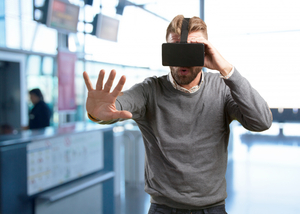-
 Find in Members
Find in Members Find in Videos
Find in Videos Find in Channels
Find in Channels
This website uses cookies to ensure you get the best experience on our website.
To learn more about our privacy policy Click herePrivacy Preference
- Tags - #augmented reality #healthcare
-
- Last updated November 8, 2024 0 comments, 48 views, 0 likes
More from Michael Jesse
More in Politics
Related Blogs
Augmented Reality in the Management of Obsessive-Compulsive Disorder (OCD)
Body
Obsessive-Compulsive Disorder (OCD) is a complex mental health condition characterized by intrusive thoughts and repetitive behaviors, significantly impacting daily life. While traditional therapies, such as Cognitive Behavioral Therapy (CBT) and exposure therapy, have proven effective, they can be challenging for patients due to the intensity and discomfort involved in facing their fears. However, recent innovations in AR in healthcare are opening new avenues for the treatment of OCD, making therapy more engaging and accessible for patients.
Augmented reality (AR) offers a unique way to simulate real-world environments and situations in a controlled, virtual setting. By combining immersive technology with therapeutic practices, AR allows patients to confront their fears gradually and safely. This article explores how AR in healthcare is being applied to OCD management, from enhancing exposure therapy to providing real-time progress tracking, and how it could transform the future of mental health treatment.
1. AR in Exposure Therapy for OCD: Simulating Real-World Scenarios
Exposure therapy is a fundamental component in treating OCD, where patients face their fears in a controlled setting to reduce anxiety and compulsive behaviors.
- Controlled Environment: AR allows therapists to recreate anxiety-triggering situations virtually, such as handling objects perceived as "contaminated" or facing social interactions. This controlled exposure helps patients build confidence while managing their anxiety in a safe space.
- Gradual Progression: With AR, therapists can adjust the intensity of exposures based on the patient’s progress, providing a gradual and personalized approach to treatment.
2. Enhanced Cognitive Behavioral Therapy (CBT) Through AR
CBT is commonly used to address the thought patterns that underlie OCD, and AR can make this therapy more engaging by using interactive and visual elements.
- Visualizing Intrusive Thoughts: AR can help patients visualize and confront their intrusive thoughts, which are often difficult to articulate. This visual representation makes the therapy process more tangible and helps patients see the impact of their thought patterns.
- Interactive Coping Strategies: AR offers interactive exercises that teach coping mechanisms for managing obsessive thoughts, allowing patients to practice these techniques in real-time with the support of visual cues.
3. Real-Time Progress Tracking and Feedback
Tracking progress is crucial in OCD therapy, and AR provides immediate feedback that can encourage and motivate patients.
- Immediate Behavioral Feedback: Patients receive real-time feedback on their behaviors during exposure sessions, helping them understand and control their responses to intrusive thoughts.
- Progress Visualization: AR systems can visually display the patient's progress over time, reinforcing their achievements and keeping them motivated to continue with therapy.
4. AR for Home-Based OCD Therapy
Many patients struggle to access regular in-person therapy sessions. AR offers the possibility for at-home treatments, allowing patients to continue therapy remotely.
- Remote Therapy Sessions: AR-based therapy applications enable patients to engage in exposure and CBT exercises from home, providing continuity of care without needing physical visits to a therapist.
- Guided Exercises: AR applications can offer guided exposure exercises that replicate the support of a therapist, making therapy accessible even for patients in remote areas or those with limited mobility.
Conclusion
The integration of AR in healthcare is redefining OCD management, offering patients a safe, engaging, and controlled way to confront their fears and manage compulsions. Through enhanced exposure therapy, real-time feedback, and remote accessibility, AR is helping to make OCD treatment more personalized and effective. As this technology continues to advance, it holds the potential to transform mental health care, providing new hope for patients with OCD and empowering them to regain control over their lives.









Comments